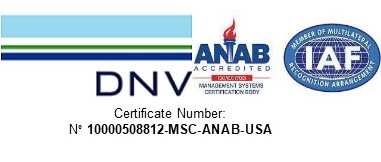The U.S. Army Corps of Engineers (USACE) continues maintenance dredging efforts on the Crossings Above New Orleans. The USACE previously completed Phase 1 and Phase 2 of the historic project to deepen the Mississippi River Ship Channel Deepening (MRSC) to 50 Feet. The areas of the Ship Channel that required dredging to provide the deeper draft channel were mechanically deepened up to Smoke Bend at Mile 175 Above Head of Passes (AHP). The USACE is dredging full channel dimensions on the Crossings, depths are location specific but authorized channel widths are 500 feet. The USACE awarded an Emergency Sole Source Procurement Cutterhead Dredge Rental Contract to Weeks Marine to construct the salt water barrier (sill) across the bottom of the Mississippi River Ship Channel at Mile 63.8 AHP.
The Mississippi River Ship Channel was mechanically deepened to Mile 175 AHP in two phases by the USACE to match the Congressional authorization to deepen the Ship Channel to 50 feet. The maximum draft recommendation on the Ship Channel was subsequently increased to 50 feet (freshwater) from the Huey P. Long Bridge (Mile 106 AHP) to the jetty end of Southwest Pass (Mile 20 Below Head of Passes [BHP]). The maximum draft north of the Huey P. Long remains 49 feet to Mile 175 AHP, the channel above Mile 175 AHP is expected to be mechanically deepened in Phases 3-5 (estimated) by 2025.
DUSTPAN DREDGES WORKING ON THE CROSSINGS ABOVE NEW ORLEANS:
WALLACE McGEORGE: The industry dustpan dredge WALLACE McGEORGE completed dredging at Medora Crossing (Mile 212 AP) this morning and then moved upriver to commence dredging full channel dimensions at Sardine Point Crossing (Mile 219 AHP). The WALLACE McGEORGE commenced dredging on the Crossings on May 10, 2022.
CUTTERHEAD DREDGE WORKING ON THE SALT WATER SILL CONSTRUCTION:
J.S. CHATRY: The industry cutterhead dredge J.S. CHATRY (Weeks Marine) continues dredging to construct the salt water barrier at Mile 63.8 AHP. Weeks expects to reach the target elevation for the first phase of the sill is a -55 feet over the next 48-hours. Once the sill is constructed to this elevation across the Ship Channel salinity testing will be conducted at the location where the salt water reaches the surface. The USACE may have to construct the sill to a higher elevation to protect the freshwater intakes for the City of New Orleans as river stages are expected to continue a slow steady fall.
CUTTERHEAD DREDGE WORKING IN THE HOPPER DREDGE DISPOSAL AREA:
E.W. ELLEFSEN: The industry cutterhead dredge E.W. ELLEFSEN (Weeks Marine) continues working on assignment in the Hopper Dredge Disposal Area (HDDA). The installation of the submerged dredge pipeline was completed during the scheduled channel closures and the submerged line was successfully installed on October 6, 2022. The cutterhead began dredging operations in the HDDA on October 7, 2022. The base contract is for 4 million cubic yards of material with options for additional cubic yardage to be added as noted within the contract.
CUTTERHEAD DREDGE(S) WORKING IN SOUTHWEST PASS:
ROBERT M. WHITE: The industry cutterhead dredge ROBERT M. WHITE (Manson Construction) completed work under Southwest Pass Cutterhead Dredge Rental Contract #2-2021 on October 13, 2022. The cutterhead’s last assignment was from Mile 12 Below Head of Passes (BHP) to Mile 16.8 BHP on the western side of the Ship Channel. The cutterhead has now moved into Baptiste Collette and commenced dredging on that shallow-draft assignment over the weekend (October 15, 2022).
MAXIMUM DRAFT RECOMMENDATIONS PER PILOT ASSOCIATION:
The updated documentation of the present maximum draft recommendation for each Pilot Association are listed below:
Associated Branch Pilots of the Port of New Orleans (Bar Pilots): The Bar Pilots increased their maximum draft recommendation to 50 feet (freshwater) on March 16, 2022.
Crescent River Port Pilots Association (CRPPA): The CPPRA raised their maximum draft recommendation to 50 feet (freshwater) on July 20, 2022.
New Orleans Baton Rouge Steamship Pilots (NOBRA): The NOBRA raised their maximum draft to 49 feet (freshwater) from Mile 88 AHP to Mile 175 AHP on July 13, 2022. The maximum draft recommendation from Mile 175 to 180 remains 47 feet and from Mile 180 to Mile 233.8 it remains 45 feet.
Associated Federal Pilots and Docking Masters of Louisiana (Federal Pilots): The Federal Pilots increased their maximum draft recommendation on July 21, 2022, to the following:
50 feet from Sea Buoy to Mile 104.7 AHP;
49 feet from Mile 104.7 AHP to 175 AHP;
45 feet Mile 175 AHP to 232.4 AHP; and
40 feet Mile 232.4 AHP to 233.8 AHP.
The controlling maximum freshwater draft for the MRSC from Mile 106 AHP (Huey P. Long) to the Southwest Pass Sea Buoy is now set at 50 feet (freshwater). The maximum draft decreases to 49 feet from the Port of New Orleans to Mile 175 AHP (Smoke Bend) until additional adjustments are made.
MISSISSIPPI RIVER STAGE UPDATES:
The Carrollton Gage (New Orleans) reading at 1400 hours today was 2.42 feet with a 24-hour change of + 0.11 feet. The National Oceanic and Atmospheric Administration’s (NOAA) National Weather Service Extended Streamflow Prediction (28-Day) for the Carrollton Gage issued today forecasts stages will continue a steady fall to 2.0 feet on November 14 (2022). The highest crest on the Carrollton Gage in 2022 to date was 13.82 feet at 2100 hours on March 22, 2022.
The Baton Rouge Gage reading at 1400 hours was 5.24 feet with a 24-hour change of + 0.01 feet. The National Oceanic and Atmospheric Administration’s (NOAA) National Weather Service Extended Streamflow Prediction (28-Day) for the Baton Rouge Gauge issued today forecasts stages will continue a slow fall to 2.2 feet on November 14 (2022).
The graph below is reproduced from NOAA’s National Weather Service website and represents an experimental product to account for the complexity of accurately predicting long-range precipitation. This forecast projects stage levels based on expected precipitation for 2 days (top) and 16 days (bottom) and was developed within the North American Ensemble Forecast System (NAEFS) computer model and highlights Quantitative Precipitation Forecasts (QPF). Along with the forecasts, a shaded area is also provided to indicate uncertainty for the forecast each day in the future. These plots are experimental and not an official forecast product.
Please utilize the attached reports for complete details including the year-to-date plot of the Carrollton Gauge.
With You,
Sean
Sean M. Duffy, Sr.
Executive Director
Standing By Channel: (504) 338-3165
Big River Coalition




